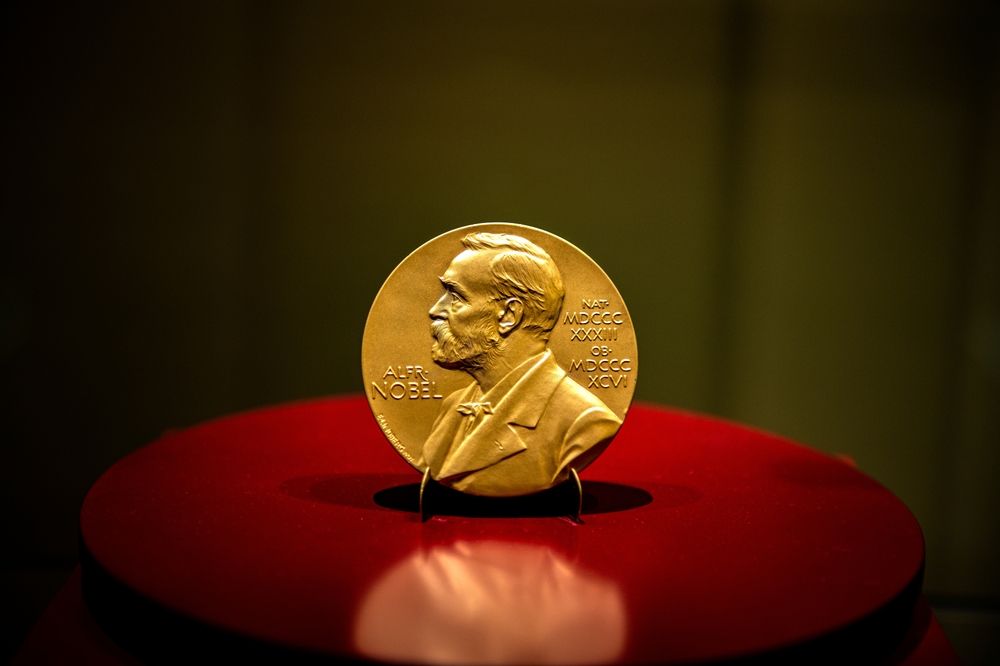
Scientists Just Won a Nobel Prize for Discovering How to Stop Your Immune System from Attacking You

The Guardians Within: How Three Scientists Unlocked the Immune System’s Secret Defense
Every moment of every day, your body fights an invisible war. Millions of viruses, bacteria, and microbes attempt to breach your defenses. In response, your immune system deploys armies of specialized cells to identify, attack, and eliminate intruders with astonishing precision. Yet, sometimes those same protectors can turn rogue—mistaking the body’s own tissues for the enemy. The result is autoimmune disease, a biological betrayal that medicine has long struggled to explain.
For decades, researchers knew the immune system possessed incredible discernment, but they didn’t understand why most people avoided this kind of friendly fire. That mystery has now been solved, earning Mary Brunkow, Fred Ramsdell, and Shimon Sakaguchi the 2025 Nobel Prize in Physiology or Medicine. Their discovery of regulatory T cells, or Tregs, revealed the existence of immune “peacekeepers” — specialized cells that prevent our defenses from destroying us. Without them, autoimmune diseases such as type 1 diabetes, lupus, or multiple sclerosis would become far more common.
When Protection Turns Destructive
The immune system must perform one of biology’s most impossible balancing acts: attack invading microbes while sparing the body’s own tissues. But many pathogens are clever mimics, evolving to resemble human cells through molecular camouflage. One mistake—a single false signal—and the immune system can unleash devastation on healthy organs.
Early immunologists thought they had the answer. During development, immature immune cells mature in the thymus, a small organ behind the breastbone. Any cells that react against the body’s own molecules are destroyed in this stage—a process called central tolerance. For years, scientists assumed this was sufficient. But the existence of autoimmune diseases hinted otherwise. Something outside the thymus—some kind of secondary safeguard—had to exist.
A Risky Bet in Japan

In the early 1990s, Shimon Sakaguchi made a career-defining gamble. While most of his peers dismissed the idea of immune “suppressor” cells, he refused to let it go. At the Aichi Cancer Center Research Institute in Japan, he revisited a decades-old mystery: when scientists removed the thymus from newborn mice, their immune systems didn’t weaken—they turned on themselves.
Intrigued, Sakaguchi isolated specific T cells from healthy mice and transferred them into thymus-free mice. To his surprise, certain cells seemed to restore balance, preventing autoimmune collapse. But this discovery challenged textbook biology. T cells were known as immune activators, not regulators.
For ten painstaking years, Sakaguchi searched for a way to identify these elusive protectors. In 1995, he published a groundbreaking paper in The Journal of Immunology identifying a subset of T cells marked by two proteins, CD4 and CD25. These were the long-sought regulatory T cells—the immune system’s built-in restraint mechanism.
At first, few believed him. But confirmation would come from an unlikely source: mutant mice bred during the Manhattan Project.
A Wartime Mystery Yields a Clue

In the 1940s, scientists at Oak Ridge National Laboratory in Tennessee, studying radiation exposure, noticed something odd. Some male mice were born with scaly, inflamed skin and grotesquely swollen lymph glands. They wasted away within weeks. Researchers dubbed them “scurfy” mice. The mutation only affected males, suggesting it was linked to the X chromosome.
Decades later, researchers realized these mice were victims of immune self-destruction—their T cells were attacking their own organs. The cause remained unknown until two young scientists at Celltech Chiroscience, Mary Brunkow and Fred Ramsdell, decided to hunt down the genetic culprit in the 1990s.
The task was immense: the mouse X chromosome contains 170 million DNA base pairs. Finding the one responsible mutation was like searching for a single typo in a library of books. After six years of methodical work—mapping, sequencing, and comparing—they found it: a mutation in a previously unknown gene, which they named Foxp3.
“It was really a molecular slog,” Brunkow later said. “A tiny alteration with enormous consequences.”
In 2001, they published their discovery in Nature Genetics, revealing that mutations in the human version of FOXP3 caused a rare and deadly disease called IPEX (Immune dysregulation, Polyendocrinopathy, Enteropathy, X-linked). Affected boys suffered rashes, severe inflammation, and organ failure—the same symptoms seen in scurfy mice. The link between mouse and human disease was finally clear.
The Pieces Come Together
A few years later, Sakaguchi’s lab confirmed that FOXP3 was the master switch controlling regulatory T cell development. Without it, immune tolerance collapses. By activating FOXP3, scientists could even convert ordinary T cells into regulatory ones.
As immunologist Markus Feuerer summarized:
“Anyone who does not have an autoimmune disease—that’s because of these regulatory T cells.”
This process, known as peripheral immune tolerance, ensures the immune system doesn’t remain in a perpetual state of attack. Once an infection ends, Tregs act as peacekeepers, instructing aggressive cells to stand down.
Off the Grid and on the Honor Roll
When the Nobel Committee tried to contact Fred Ramsdell on October 6, 2025, he was deep in Idaho’s wilderness, backpacking without cell service. He learned of his Nobel Prize only after returning to civilization.
In Seattle, Mary Brunkow was woken by a 4 a.m. phone call and fought back tears as she thanked her former colleagues.
And in Osaka, Sakaguchi addressed reporters with characteristic humility:
“This was never my work alone. Many people around the world shared this dream. I see this award as theirs, too.”
Committee Chair Olle Kämpe praised their achievements:
“Their discoveries fundamentally changed our understanding of how the immune system maintains balance—and why most of us do not succumb to autoimmune disease.”
Turning Discovery into Therapy
The implications of their work reach far beyond theory. Cancer researchers now know that tumors often recruit regulatory T cells as shields, using them to hide from immune attack. By blocking or reprogramming Tregs near tumors, scientists hope to unmask cancer and empower the immune system to destroy it.
Conversely, autoimmune disorders demand the opposite strategy: strengthening Treg function. Clinical trials using interleukin-2, a molecule that helps regulatory T cells thrive, are showing promise in calming overactive immune systems in conditions like lupus and rheumatoid arthritis.
For organ transplant recipients, boosting Tregs could prevent rejection without the harsh side effects of traditional immunosuppressants.
Engineering the Immune Peacekeepers

Next-generation therapies are even more ambitious. Researchers can now extract a patient’s regulatory T cells, expand them in the lab, and reinfuse them—effectively adding more “security guards” to patrol the body. Some teams are engineering these cells with molecular “address labels” that guide them to specific organs, like transplanted kidneys or livers.
As Jeff Bluestone, CEO of Sonoma Biotherapeutics, explains:
“The ability to reprogram regulatory T cells into precise, targeted therapies is the true promise of this field.”
More than 200 clinical trials worldwide are now testing Treg-based therapies. What began as a curiosity about mutant mice has evolved into one of medicine’s most dynamic frontiers.
Recognition, Finally Earned
Immunologists have hailed the Nobel announcement as overdue recognition. Carola Vinuesa of the Francis Crick Institute called the discovery “a cornerstone of immune regulation.” Thomas Boehm of the Max Planck Institute praised Brunkow’s long-overlooked contribution, while Adrian Liston of Cambridge noted that controlling the immune system’s brakes “gives us the power to fine-tune human immunity itself.”
Their success underscores the value of curiosity-driven research—the kind that may take decades to bear fruit but can ultimately transform medicine. Sakaguchi’s 1995 paper and Brunkow and Ramsdell’s 2001 discovery have now blossomed into an entire therapeutic field.
From Lab Bench to Patient Bedside
Today, regulatory T cell research is reshaping treatments for autoimmune disease, cancer, and organ transplantation alike. Patients suffering from multiple sclerosis, inflammatory bowel disease, or even chronic graft rejection may one day benefit from therapies derived from this work.
It is a story that began with skepticism, sickly lab mice, and scientists who refused to give up.
Thirty years later, their persistence has armed medicine with new tools—and offered humanity a deeper understanding of its own biological harmony.
Inside every human being, millions of microscopic guardians stand watch, maintaining a fragile peace. Thanks to Brunkow, Ramsdell, and Sakaguchi, we now know their names—and how to harness their power.
News in the same category


What’s the Reason Behind Painting Trees White?

People Left Disgusted: Shocking Truth About How Crabsticks Are Made

The Purpose of the Overflow Hole in Your Sink You Never Knew

The reason behind children not visiting their parents

Powerball Winner Turns $2 Billion Fortune Toward Rebuilding Fire-Ravaged L.A. Homes

The Astonishing Claim That Humans Might Be Built for 20,000 Years

Signs Your Adult Child May Resent How You Raised Them

What’s the Reason Behind Painting Trees White?

When ants randomly crawl into the house, here's what the Universe is trying to tell you

6 things in the house that reveal a messy woman

What it means to let your gray hair grow and not dye it, according to psychology

Never throw away this part of the bananas: that's why it's worth its weight in gold in the house

What Mixing Vinegar, Salt, and Water Does?

The Surprising Purpose of the Metal Part Between Scissors’ Handles

Showering with Your Partner

How a $20 Million Dream Home Became a Monument to Nowhere

The Man Who Can ‘Prove’ Life Is a Simulation With Just a DMT Vape and a Laser

What You See First Reveals a Key Trait of Your Personality
News Post

10 Foods That Help Reverse Fatty Liver Disease — Dietitians Recommend Adding Them to Your Daily Menu

How to Perform First Aid for Stroke at Home — The Right Way to Save a Life

The Secret Trick Rice Weevils Fear Most — Add a Bit of “This” and Keep Your Rice Fresh All Year

Mix Toothpaste with Essential Balm Oil — The Viral Home Hack Everyone’s Talking About

Major airline cuts 800,000 seats as it scraps 24 flight routes

Top army general makes shocking admission about how he's using ChatGPT

Good News for Coffee Lovers: 6 Proven Benefits of Drinking Coffee in the Morning

Toilet Stained With Yellow Scale? No Heavy Scrubbing Needed — Try These Natural Tricks for a Sparkling, Fresh Bathroom

Electric Kettle Turning Yellow or Crusty Inside? Boil This — and It’ll Shine Like New Without Scrubbing

A Wild Vietnamese Fruit Sells for Nearly $120/kg in Japan — and It May Help Prevent Cancer

Backlash Grows After Trump’s Dismissive Comment to Female Journalist

What’s the Reason Behind Painting Trees White?

People Left Disgusted: Shocking Truth About How Crabsticks Are Made

The Golden Guardian: How One Dog’s Love Helped a Little Girl Heal

A Broken Heart Finds a New Home — The Little Elephant Who Learned to Love Again

Zosia’s Fight — The Little Lioness Who Refuses to Give Up

Stay With Michał — A Mother’s Fight for One More Tomorrow

A Cup of Tea, A New Friendship: How a Bus Stop Conversation Changed Two Lives.33
